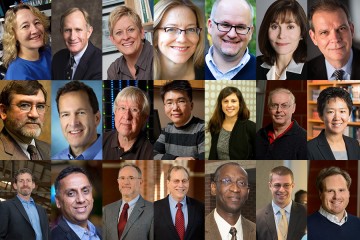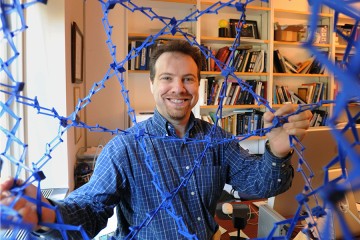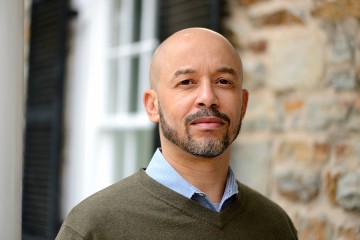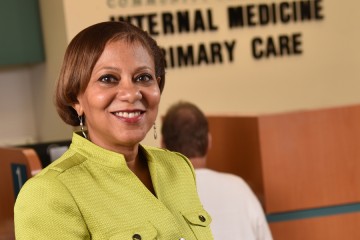Sabine Stanley is grappling with one of the most elusive questions of our universe—how planets work.
As a planetary physicist who recently joined Johns Hopkins as a Bloomberg Distinguished Professor, she focuses on magnetic fields as a means of studying the interiors of planets, including those in little-understood realms light-years away from our solar system. It's heady research that might get scientists closer to understanding whether planets beyond Earth could sustain, or have sustained, forms of life.
Right now Stanley is eager to see what new findings might come from the largest planets of our own solar system, through two major NASA explorations: the Juno Mission to Jupiter, and the Cassini mission to Saturn.
"We're on the cusp of an extreme wealth of new data," Stanley says. Investigating magnetic fields of these planets, she says, could improve our understanding of the origins of all planets.
The proximity to space missions was one motivation for Stanley to join Johns Hopkins after 11 years of research and teaching at the University of Toronto. Not only is she closer to NASA, but she's also working directly with a cadre of planetary scientists at Johns Hopkins' Applied Physics Laboratory. Through the university she also has access to high-performance computing facilities that allow for the in-depth simulations of magnetic fields that are the cornerstone of her research.
At Johns Hopkins, Stanley's appointment bridges the Department of Earth and Planetary Sciences within the Krieger School of Arts and Sciences, and the Space Exploration Sector of the Applied Physics Lab.
Mike Ryschkewitsch, who heads that APL sector, said that in Stanley's short time there so far, "both our emerging direct collaborations and the strengthening of connections with the Department of Earth and Planetary Sciences have exceeded our expectations, and we are excited about the future."
Also see
As a child in Sudbury, Ontario, Stanley knew she had a knack for math and science but had no notion this could lead her toward the deepest corners of space. In a family of non-scientists—her parents owned an Italian restaurant, which she essentially grew up in—her best guess was that she might become a doctor.
Watching "Star Trek," she says, gave her the first taste of a passion for space science. As an undergrad at the University of Toronto, Stanley studied astronomy and physics, but she found herself wanting more direct work with planets. When she arrived at Harvard in 1999, she turned to geophysics for her master's degree, then narrowed her focus to planetary interiors for her doctorate.
After a postdoctoral fellowship at the Massachusetts Institute of Technology, she returned to her alma mater in Toronto, ultimately becoming the Canada Research Chair in Planetary Physics. There she fine-tuned her research on magnetic fields, shifting from planets in our own solar system toward investigations of exoplanets.
Exoplanets—which orbit around stars beyond our own sun—are a relatively new research frontier for space science, with the most significant discoveries coming forward during the past decade. To date, scientists have confirmed nearly 3,500 exoplanets and have data suggesting there may be thousands more in existence.
Stanley is making a name for herself in this pioneering field through her research on the atmospheres of "Hot Jupiters," a class of exoplanets that are similar to Jupiter but orbit very close to their stars; as well as her work on water-rich exoplanets known as "ocean worlds," and rocky exoplanets known as "Super-Earths."
Such studies are helping crack the mystery of how magnetic fields work for these distant planets—inching us closer to knowing whether they've ever hosted forms of life. On Earth, magnetic fields help protect living creatures from dangerous solar wind, but not much is understood yet about their implications for exoplanets, and how they might affect habitability.
Another longtime interest Stanley hopes to continue at Johns Hopkins is her advocacy for increasing the representation of women and minorities in the sciences. She recently spoke on these topics in an interview with Eos: Earth & Space Science News.
Stanley is the university's 27th Bloomberg Distinguished Professor, taking her place among an interdisciplinary cohort of scholars who are working to address major world problems and teach the next generation. The program is backed by a $350 million gift from Johns Hopkins alum, philanthropist, and three-term New York City Mayor Michael R. Bloomberg.
"Dr. Stanley's appointment adds a critical connection between the Krieger School and Applied Physics Laboratory at a particularly exciting time in planetary science research and exploration," says Sunil Kumar, provost and senior vice president for academic affairs at Johns Hopkins. "As a world-class interdisciplinary scientist with a strong reputation for investigating challenging ideas, she embodies the intention of Mike Bloomberg's visionary gift."
Added Krieger School Dean Beverly Wendland: "We look forward to working with Dr. Stanley on a number of universitywide initiatives, particularly in the areas of space science and big data. With her scientific expertise and her stellar teaching skills, Dr. Stanley is exactly the kind of scientist who will exemplify the goals of the Bloomberg Distinguished Professor program."












